
The Custard Factory is a creative and digital business workspace complex, including independent shops, cafes and bars, on the site of what was the Bird's Custard factory off High Street, Deritend, in the Digbeth area of central Birmingham, England.
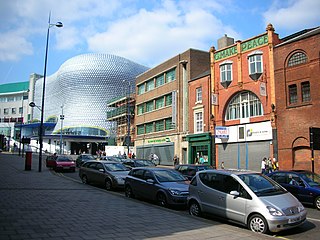
Digbeth is an area of central Birmingham, England. Following the destruction of the Inner Ring Road, Digbeth is now considered a district within Birmingham City Centre. As part of the Big City Plan, Digbeth is undergoing a large redevelopment scheme that will regenerate the old industrial buildings into apartments, retail premises, offices and arts facilities. The district is considered to be Birmingham's 'Creative Quarter'.

Although Birmingham in England has existed as a settlement for over a thousand years, today's city is overwhelmingly a product of the 18th, 19th, and 20th centuries, with little surviving from its early history. As it has expanded, it has acquired a variety of architectural styles. Buildings of most modern architectural styles in the United Kingdom are located in Birmingham. In recent years, Birmingham was one of the first cities to exhibit the blobitecture style with the construction of the Selfridges store at the Bullring Shopping Centre.
Witton is an inner city area in Birmingham, England, in the metropolitan county of the West Midlands. It was within the ancient parish of Aston in the Hemlingford hundred of the historic county of Warwickshire. It is known as the home of Aston Villa Football Club at Villa Park.
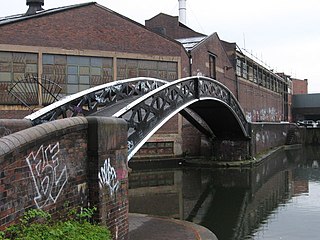
Bordesley is an area of Birmingham, England, 1.2 miles (2 km) south east of the city centre straddling the Watery Lane Middleway ring road. It should not be confused with nearby Bordesley Green. Commercial premises dominate to the west of the ring road, but much of this area is to be redeveloped. Blocks of residential apartments are planned and set for completion from the mid-2020s onwards. The largely residential area east of the ring road was renamed Bordesley Village following large scale clearance of back-to-back houses and redevelopment in the 1980s and 90s. Bordesley is the real life setting of the BBC series Peaky Blinders, and home to Birmingham City Football Club's ground, St Andrew's.
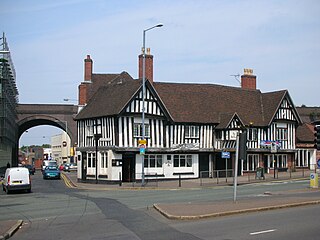
Deritend is a historic area of Birmingham, England, built around a crossing point of the River Rea. It is first mentioned in 1276. Today Deritend is usually considered to be part of Digbeth.

Julius Alfred Chatwin FRIBA, ARBS, FSAScot was a British architect. He was involved with the building and modification of many churches in Birmingham, and practised both Neo-Gothic and Neo-Classical styles. His designs always included all of the carvings and internal fittings.
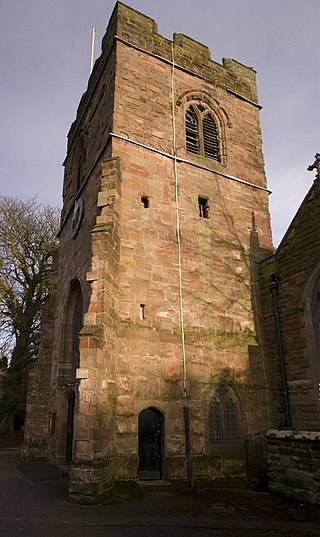
Saint Peter's is the ancient parish church of Harborne, Birmingham, England.
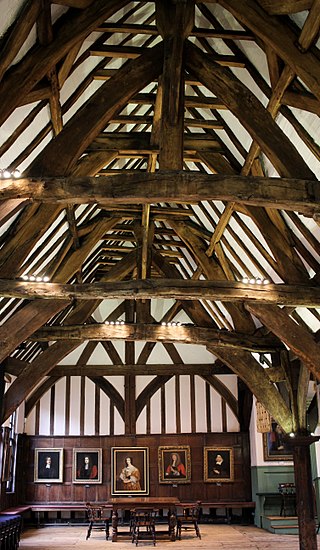
The Merchant Adventurers' Hall is a medieval guildhall in the city of York, England. It is a Grade I listed building and scheduled ancient monument.
Joshua Toulmin Smith was a British political theorist, lawyer and local historian of Birmingham.

The Lad in the Lane is a pub in the Bromford area of Erdington in Birmingham, England. Dating to the year 1400, it is considered to be the oldest house and pub in the city, although The Old Crown in Digbeth claims to date from 1368, a date which is yet to be confirmed. Prior to the dating of the building, New Shipton Barn in Walmley was considered to be the oldest building in Birmingham, dating to around 1425. To find the construction date of the building, scientists used a technique called dendrochronology to analyse the timbers in the oldest known part of the building. The results showed that it was constructed in the spring at the end of the 14th century.

Birmingham Curzon Street railway station is the planned northern terminus of High Speed 2 in the city centre of Birmingham, England. The new railway will connect Birmingham to London Euston via Birmingham Interchange and Old Oak Common. Curzon Street will have seven terminal platforms and is planned to open in 2026.

Lucy Toulmin Smith (1838–1911) was an Anglo-American antiquarian and librarian, known for her first publication of the York Mystery Plays and other early works.

Louth Park Abbey was a Cistercian abbey in Lincolnshire, England. It was founded in 1139 by the Bishop Alexander of Lincoln as a daughter-house of Fountains Abbey, Yorkshire.

The Guildhall is a historic building in Bore Street in Lichfield, Staffordshire in the United Kingdom. The guildhall is a Grade II listed building.

Munslow is a small village and civil parish in Shropshire, England. It is situated on the B4368, 7 miles (11 km) northeast of the small town of Craven Arms, in the Corvedale, at around 140 metres (460 ft) above sea level.

The Drewe Arms is a Grade II* listed public house on the north side of The Square in Drewsteignton, Devon.

Oswestry Guildhall is a municipal building in Bailey Head in Oswestry, Shropshire, England. The structure, which was the meeting place of Oswestry Municipal Borough Council, is a Grade II listed building.
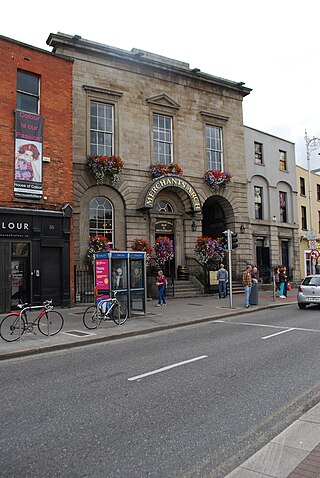
Merchants' Hall is a former 19th century guildhall, now a protected structure, on Wellington Quay in Dublin, Ireland. It is located opposite the Ha'penny Bridge and backs on to Temple Bar. The building was the last of the city guildhalls to be constructed and only operated as a guildhall for a period of 20 years before ceasing as the Merchants' Guild ended its main work, along with the other Guilds of the City of Dublin.


















